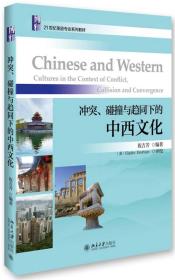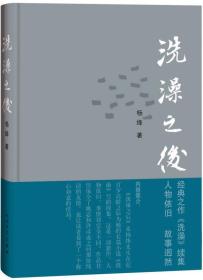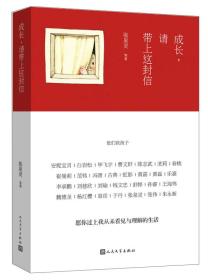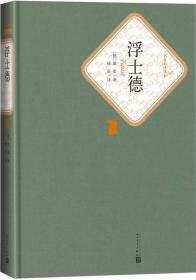
冲突、碰撞与趋同下的中西文化
¥ 19.94 4.4折 ¥ 45 九五品
仅1件
河北廊坊
认证卖家担保交易快速发货售后保障
作者祝吉芳 著
出版社北京大学出版社
出版时间2016-07
版次1
装帧平装
货号A6
上书时间2024-12-15
- 在售商品 暂无
- 平均发货时间 13小时
- 好评率 暂无
- 最新上架
商品详情
- 品相描述:九五品
图书标准信息
- 作者 祝吉芳 著
- 出版社 北京大学出版社
- 出版时间 2016-07
- 版次 1
- ISBN 9787301272718
- 定价 45.00元
- 装帧 平装
- 开本 16开
- 纸张 胶版纸
- 页数 648页
- 字数 256千字
- 正文语种 英语
- 丛书 21世纪英语专业系列教材
- 【内容简介】
-
在客观再现中西方学者有关中西方文化差异研究成果的基础上,本教材具体内容以近年来的大量跨文化交流案例为横线,以下述五个部分的内容为纵线,全面而审慎地展开:中西文化对比的意义;
无声语言与文化差异;思维与文化差异;价值观与文化差异;文化本位差异。
视野较宽:21世纪的英语教学不应仅局限于语言层面,应该把视野扩大到文化层面,因此本教材还强调文化差异意识及敏感性的培养。
涉及面广:本教材综合了英汉语言学、翻译学、文化学、文化交流学、人类学、史学等学科知识,比同类教材更重视学生对所学知识的综合运用。
时代感强:今日学生的文化交流能力,特别是文化视野更为宽阔,因此本教材案例力求时代感强。 - 【作者简介】
- 河海大学外语学院教授,2001年南京大学博士毕业,全英文独撰作品2部,主编教材9部,其中《英汉翻译:方法与试笔》在我社出版;汉译英作品3部,英译汉作品8部,研究主持科研10项
- 【目录】
-
Contents
Foreword…1
Part I East and West
Unit 1 Why Contrasting Chinese and Western Cultures?…2
I. Ancient Civilizations and Cultures…2
II. Cross-cultural Comparative Studies in China…4
III. Imperatives to Contrast Chinese and Western Cultures…7
IV. A Note on Some Key Concepts…11
Unit 2 Traditional Characteristics of Chinese and Western Cultures…14
I. “There Are All Kinds of Birds When a Forest Gets Large”…15
II. Traditional Chinese Cultural Characteristics…17
III. Traditional Western Cultural Characteristics…24
Unit 3 Affinities across Cultures…29
I. An Unexpected Affinity…30
II. Reading for More Cultural Affinities…30
III. A Note on Some Key Concepts…38
Part II Cultural Differences in Silent Languages
Unit 4 Time…43
I. Time in China and the West…44
II. Two Time Modes…48
III. Past-oriented Societies vs. Future-oriented Societies…54
IV. Two Time Orientations…57
Unit 5 Space…61
I. Spatial Language…62
II. Spatial Language and Culture…65
III. Spatial Language and Life…71
IV. Changes We Cannot Afford…73
Unit 6 Smiles, Nods and Silence…75
I. Smiles…75
II. Nods in the Intercultural Communication…80
III. Silence in the Intercultural Communication…82
Part III Cultural Differences in Thinking
Unit 7 Intuitive vs. Logical Thinking…89
I. Definitions of Intuitive and Logical Thinking…89
II. Philosophy and Thinking…90
III. Application of the Two Thinking Modes…94
IV. Impact of Thinking Modes on Writings…98
V. Logic in China and Intuition in the West…100
Unit 8 Dialectical vs. Analytical Reasoning…104
I. Proverb Preferences across Cultures…104
II. Dialectical Reasoning…105
III. Analytical Reasoning…109
IV. More about the Two Reasoning Modes…113
Unit 9 Holistic vs. Atomistic Visions…116
I. A Detention Room Incident…116
II. Prominent Attributes of Holistic and Atomistic Visions…117
III. Vision and Cognition…122
IV. Vision and Language…123
V. Zhengshan Xiaozhong and Lipton Black Tea…128
Unit 10 Categorizing Objects by Relationships vs. by Attributes…131
I. Two Ways to Categorize One Person…132
II. Principles to Categorize Objects…133
III. How to Categorize Objects and Why…135
IV. Impacts of Different Ways of Categorization…137
V. Causal Attribution Differences Out of Different Categorization Ways…140
Unit 11 Non-controllers vs. Controllers…143
I. Too Early to Tell…144
II. Why So Different Stances towards Life…144
III. “Being” and “Doing” Cultures…149
IV. Manifestations of “Being” Culture and “Doing” Culture…153
Part IV Different Cultural Orientations
Unit 12 The Introvert-oriented vs. the Extrovert-oriented…160
I. Personality Types…160
II. Personality Types of Cultures…162
III. Effects of Personality Types on Pattern Preferences…166
IV. A Contrast of Cultural Phenomena…171
V. The Trend of the Introvert-oriented Chinese Culture…175
Unit 13 Collectivism vs. Individualism…177
I. An Embarrassing Habit…177
II. Collectivism and Individualism as Cultural Orientations…179
III. Collectivism and Individualism in Cultural Anthropology…183
IV. Collectivist and Individualist Perspectives of “Self”…185
V. Interdependence vs. Independence…189
Unit 14 Femininity vs. Masculinity…193
I. Gender Traits…193
II. Feminine Chinese Culture…195
III. Masculine Western Culture…201
IV. Why So Different?…205
V. The Trend of Cultures and Its Potential Impact…208
Unit 15 Advocacy of Jing vs. Dong…211
I. Introduction to Two Concepts…211
II. Jing Advocacy of China…213
III. Dong Advocacy of the West…221
IV. Differences and Discomforts…225
Unit 16 Implicitness vs. Explicitness…229
I. “Half a Story”…229
II. Implicitness and Explicitness of Language…231
III. Implicit Chinese…234
IV. Explicit Westerners…241
V. High Context vs. Low Context…244
VI. “Chicken and Duck Talk”…247
Part V Different Cultural Standards
Unit 17 Peace vs. Conflict…253
I. Great Names and Different Cultural Standards…253
II. External Factors and Cultural Standards…258
III. Cultural Standards and Their Unique Products…260
IV. Better Ways to Know Each Other…265
Unit 18 Egalitarian and Inegalitarian Distribution…268
I. Hate-the-rich Mentality…268
II. Chinese-style Egalitarianism…269
III. Western-style Inegalitarianism…272
IV. Egalitarianism and Inegalitarianism in China and the West…274
Unit 19 Good vs. Evil Human Nature…279
I. Definitions of Key Concepts…280
II. Human Nature and Education…281
III. Theorization of Assumptions about Human Nature…283
IV. Human Nature Theories and the Rule of Ethics vs. Law…288
Unit 20 Rule of Individuals vs. Rule of Law…290
I. An Unexpected Complaint…290
II. Rule of Individuals in Traditional Chinese Thought…291
III. Rule of Law in Western Thought…296
IV. Rule of Law in China…30
Bibliography…305
点击展开
点击收起
— 没有更多了 —












以下为对购买帮助不大的评价